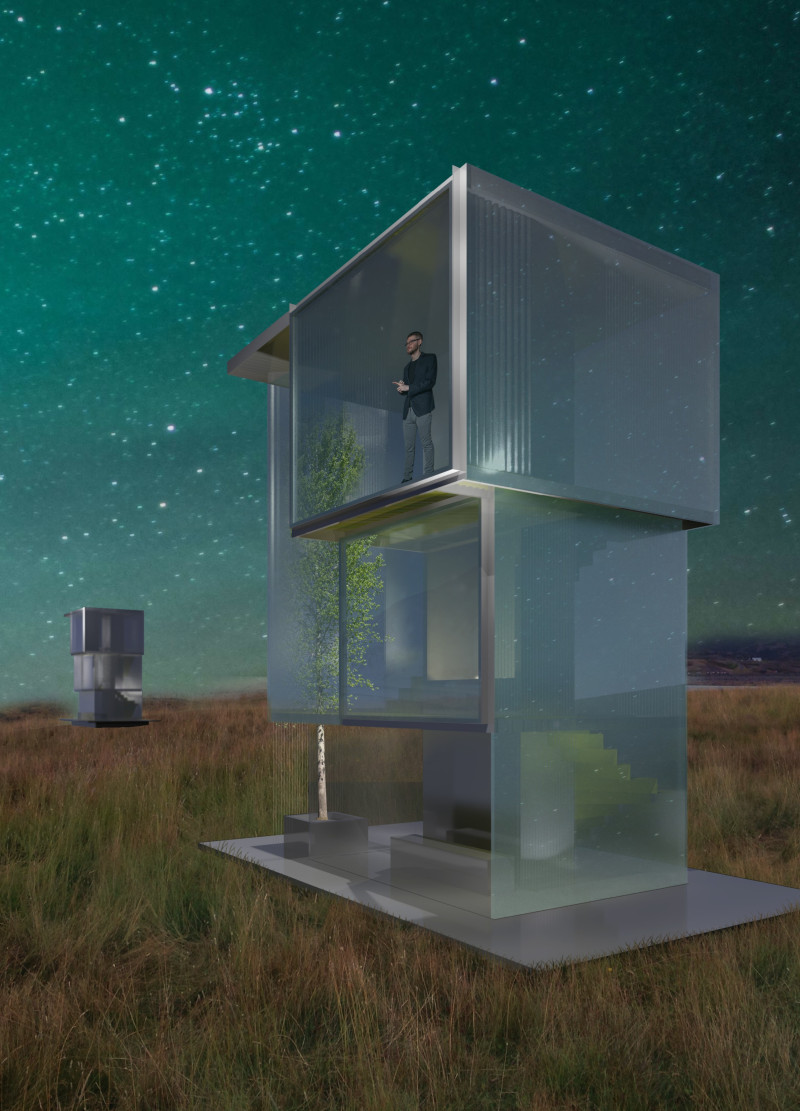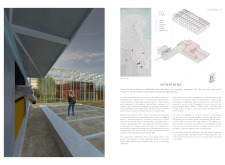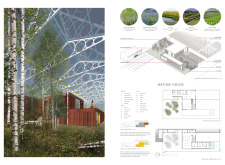5 key facts about this project
## Overview
Located in the distinctive landscapes of Iceland, the Nature House is a carefully conceived architectural project that fosters interaction between visitors and the surrounding environment. The design integrates modern aesthetic principles with a strong emphasis on sustainability and energy efficiency, enabling guests to engage with the natural elements in a meaningful way while catering to practical requirements.
## Spatial Organization and Design Elements
The Nature House features a well-considered layout that comprises various zones tailored for specific functions. Guest accommodations include rooms designed to accommodate 2-4 occupants, with central core elements that allow tree growth, reinforcing ecological connections. Communal spaces, such as the dining area, serve as social hubs where guests experience Icelandic cuisine, while various private areas provide opportunities for quiet reflection.
Prominent design elements include a large greenhouse structure that optimizes natural light for the interior and enhances thermal efficiency through its innovative roof patterns. The use of locally sourced timber promotes sustainability and warmth, in contrast to the external climate. Extensive glazing establishes a visual and physical connection to the landscape, while lightweight aluminum in guest rooms ensures a modern, durable aesthetic that aligns with the project’s environmental ambitions.
## Sustainability and Resource Management
A range of sustainable practices underpins the Nature House, most notably a biogas digester that transforms organic waste into energy, contributing to a closed-loop system with minimal waste and carbon emissions. Rainwater harvesting systems further enhance the house’s sustainability by providing resources for landscape irrigation. Landscaping practices favor native plant species, reducing maintenance and promoting local biodiversity, thereby fostering a balanced relationship with the surrounding ecosystem.
This project exemplifies a thoughtful integration of architectural design with ecological responsibility, setting a benchmark for sustainable hospitality practices within remote environments.





















































